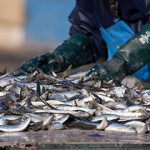US foodservice faces a tough first half of 2023

Driven by continued high labor and commodity costs, along with consumer inflation concerns, the outlook for the U.S. foodservice industry looks bleak for the first half of 2023.
The U.S. Bureau of Labor Statistics reported a 8.3 percent year-over-year hike in prices for food away from home in December 2022, with sales dropping 0.9 percent to USD 88.3 billion (EUR 81 billion) from November to December, according to preliminary data from the U.S. Census Bureau.
The trifecta of higher food costs, labor costs, and energy/utility costs are now a significant challenge for a majority of operations, according to the the National Restaurant Association’s Business Conditions survey. A vast majority (92 percent) of restaurant operators surveyed say food costs are a significant challenge, and 89 percent said labor costs are a significant challenge. As a result, 50 percent of operators expect to record lower profits in 2023, according to the NRA.
Rancho Dominguez, California, U.S.A.-based Santa Monica Seafood President and CEO Roger O’Brien told SeafoodSource, despite his own company’s positive outlook for its foodservice-sector performance, he expects to see many small foodservice groups go out of business in the first half of 2023.
“Those that make it past then should survive and slowly rebound as the economy improves, product costs come down and the labor market opens,” O’Brien said.
Foodservice “got hit so much harder during the pandemic than retailers, and there are lots of smaller, independent restaurants still suffering,” O’Brien said. “Many are still behind in rent and are still suffering with a variety of labor issues – cost and availability – and most restaurants don’t have the capital resources retailers have.”
Additionally, after handing out USD 21 billion (then EUR 25.5 billion) in funds in 2021, the U.S. government failed to pass additional financial support for the industry, “despite being the instigator behind the many closures and restrictions that fell on restaurant groups,” O’Brien said.
“So, when you’re already in a hole financially, you’ve got more digging to do to get out,” he said.
According to foodservice research firm Technomic, the listing of seafood on restaurant menus rose 0.3 percent in 2022, meaning the difficulties restaurants have faced have not significantly impacted their menuing of seafood.
“[Sales] are holding steady over the past year, but have still not bounced back to prior Covid-19 levels,” Datassential Associate Director of Content Claire Conaghan told SeafoodSource.
Seafood sales through foodservice were essentially flat in 2022, Performance Food Group Vice President of Procurement Mike Seidel said at the National Fisheries Institute’s Global Seafood Markets Conference on Tuesday, 17 January in La Quinta, California, U.S.A. But finfish was a big winner, with total sales increasing 9.1 percent by value for the 12 months ending in November 2022, Seidel said.
However, 61 percent of Americans say they are ...
Photo courtesy of ChameleonsEye/Shutterstock




Share